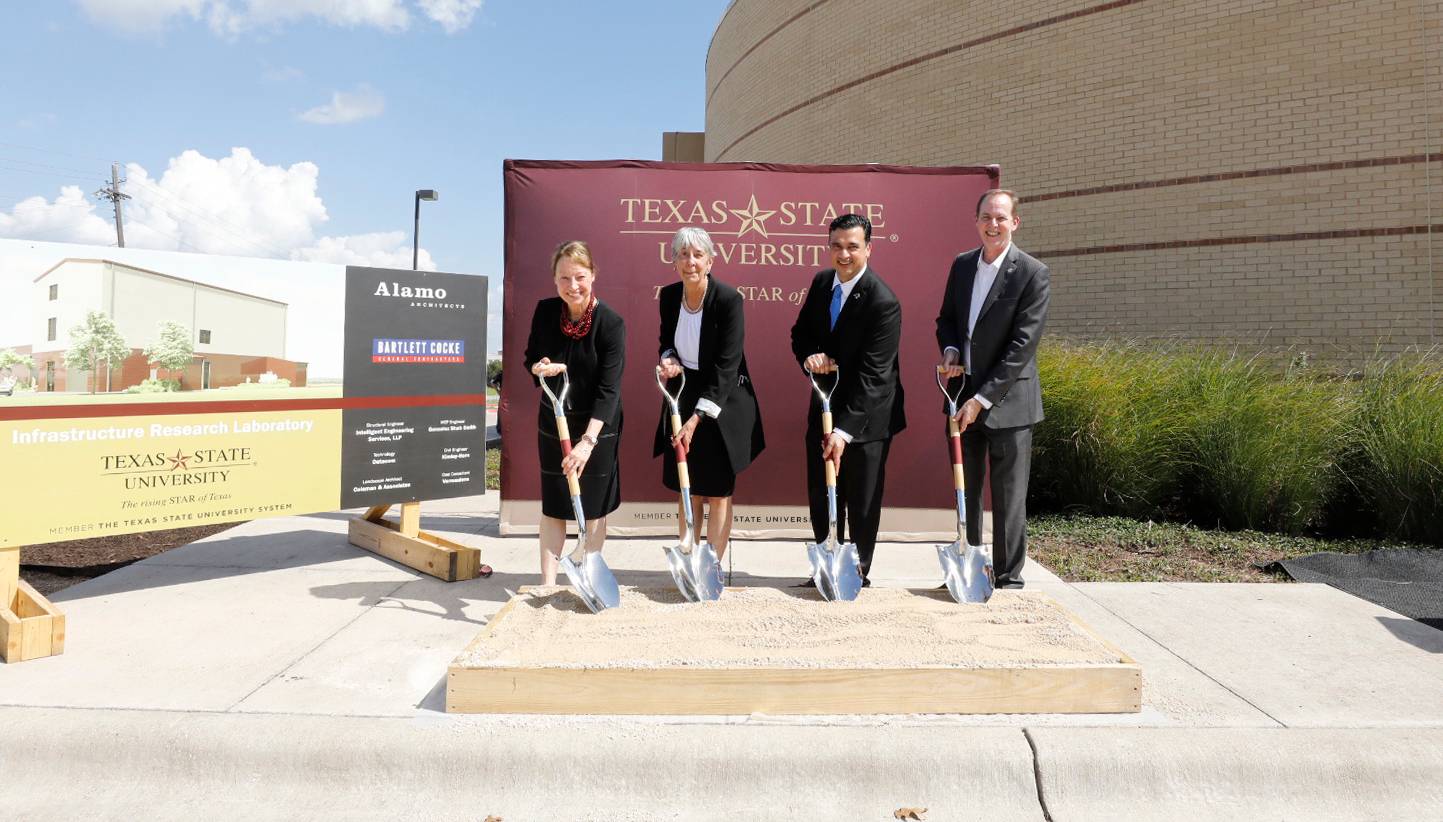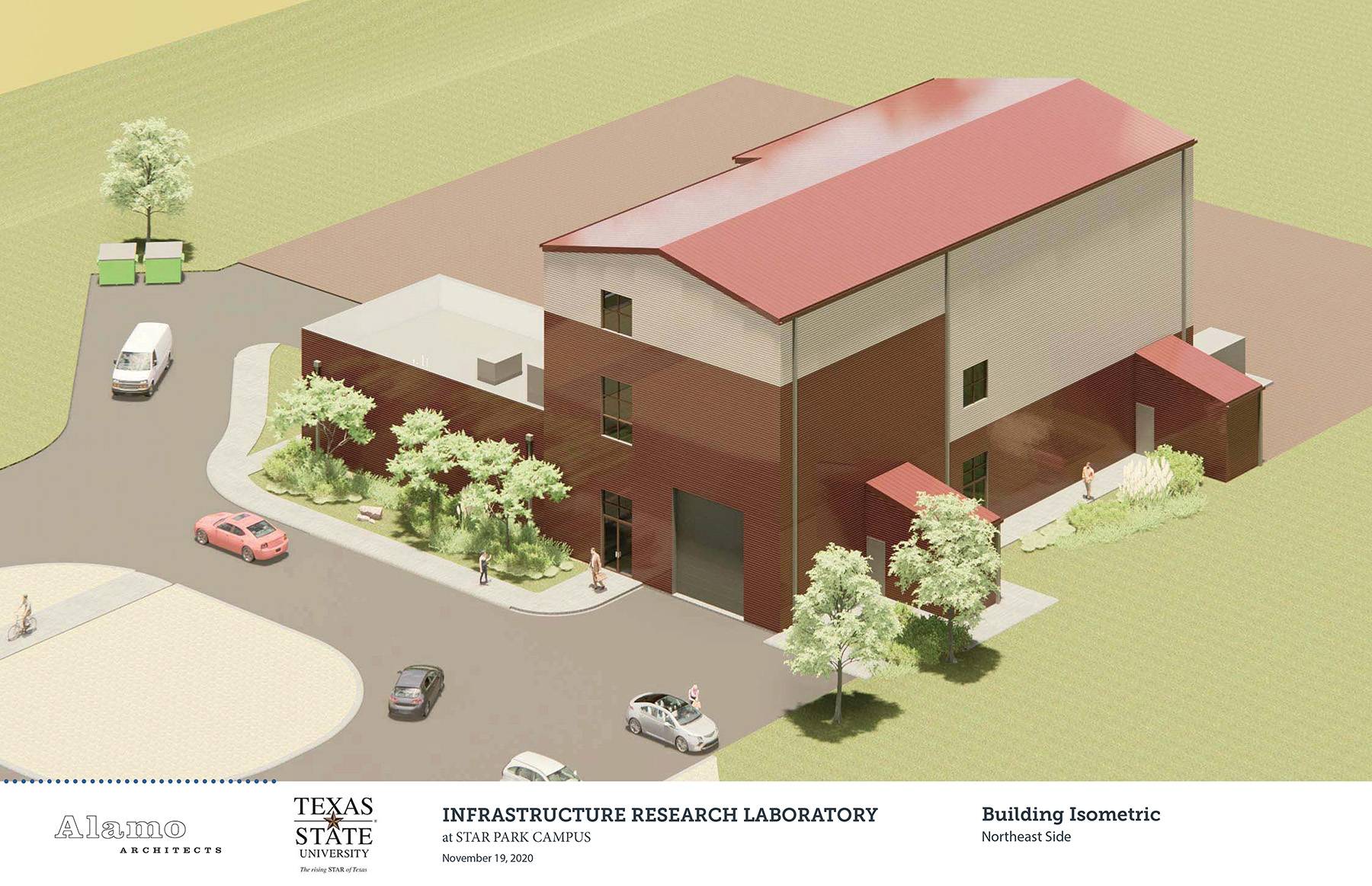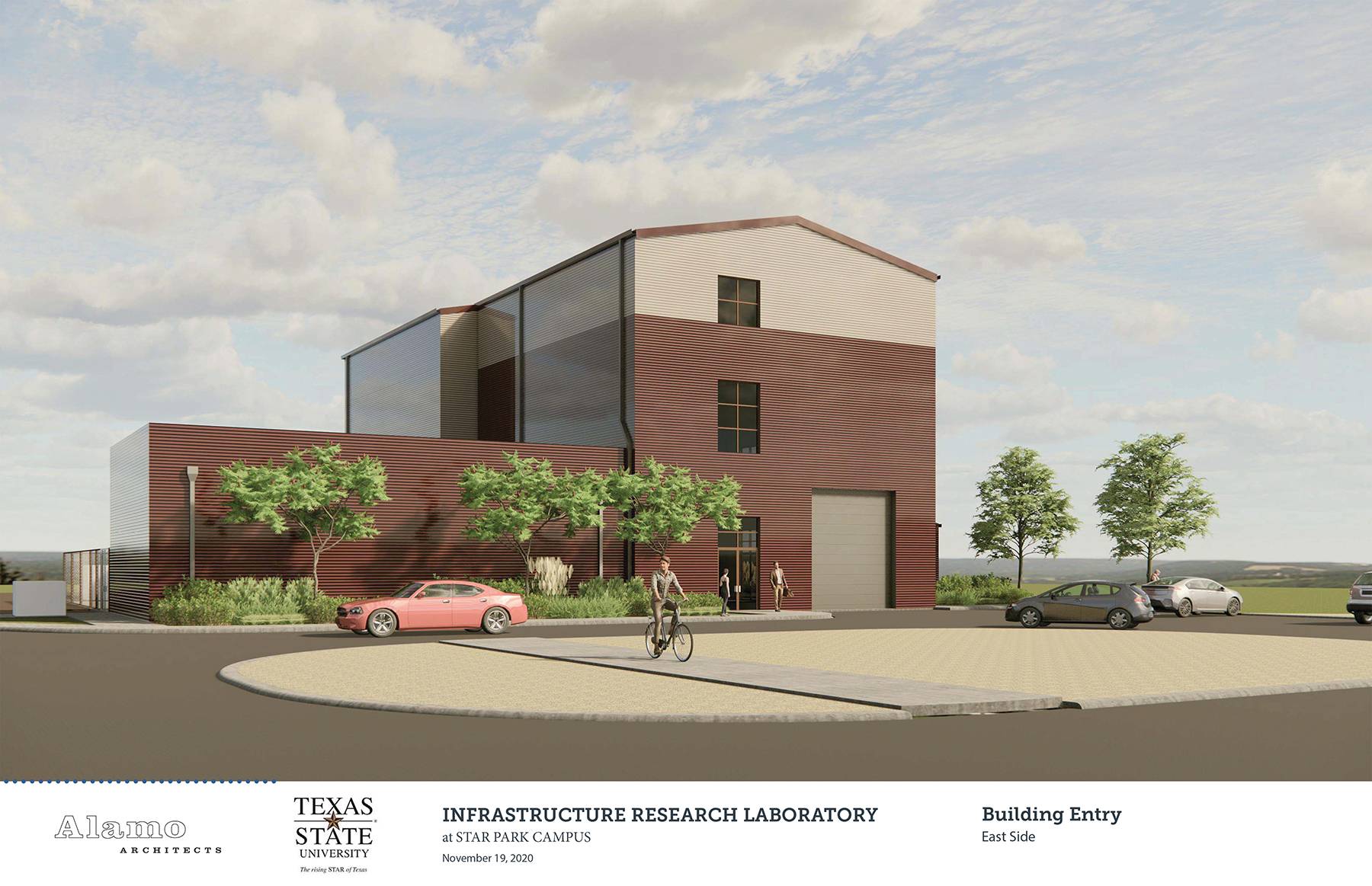The civil engineering curriculum at Texas State was holistically built upon on the concept of TEI. Students study device programming, secure data transfer and storage, predictive analytic tools and application-based maintenance protocols. This innovative undergraduate program prepares students to enter the civil engineering workforce with an ability to implement "smart technology” solutions.
The IRL features a 3-foot-thick reinforced concrete "strong floor" with tie-down anchorages and lateral reaction walls, along with two overhead cranes independently capable of carrying 30 tons. A comprehensive range of hydraulic actuators, pumps and closed-loop loading systems will permit the application of static, dynamic and fatigue loads, and a variety of data acquisition systems will allow IRL to implement a wide variety of testing configurations for studying the behavior of structural elements and systems both on scale models and prototypes.
For example, structural components subject to various loading modes—such as reinforced and precast/prestressed concrete deck panels, beams, columns and their connections, multi-story structures and multi-girder bridges—can be tested utilizing the IRL's facilities. Part of the 2,526-square-foot strong floor with a 36-foot clear height can be utilized for physical simulation of environmental green infrastructure such as permeable pavement, rain gardens, bioretention and constructed wetlands for their responses to controlled environmental factors.
The IRL addresses a pressing need for the rapidly-growing Austin-San Antonio corridor. In 2018 the Austin City Council adopted a $1.4 billion Corridor Construction Program to further develop nine major Austin corridors. It is anticipated that the bulk of construction will occur between 2021-24. By growing the regional ecosystem through activities promoting and supporting commercialization, entrepreneurship and innovation, the IRL will be a new driving force for infrastructure research and entrepreneurship in the Central Texas region.
Project architects are Alamo Architects and contractor is Bartlette Cocke General.




